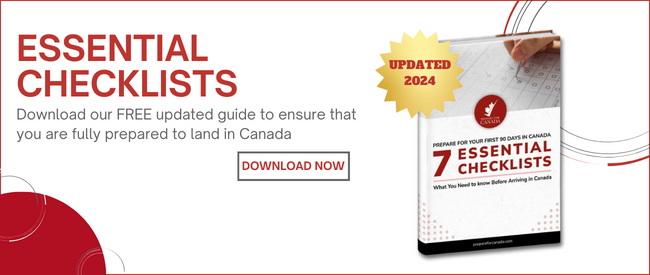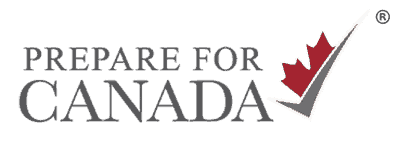
by Jae-Eun Park | Nov 20, 2020 | Crafting Your Job Search Action Plan to Work in Canada

Using LinkedIn to find work in Canada is quite helpful. Having arrived in Canada as an immigrant recently, I have found that getting a job here can be a challenging experience. I had to spend some time adapting to the Canadian workplace culture and it was not easy.
Here are some of the things I found to be important when I used LinkedIn to find work in Canada as a newcomer.
You need a professional photo
A professional photo is a very important factor in how you build out your LinkedIn profile. This is not Facebook or Twitter. You should present an image that is professional and reflects the type of business you want to work in.
Use the summary to sell yourself
Much like a resume, you need to be concise and grab the attention of the hiring manager quickly. This is an opportunity to showcase your skills and abilities that are most required in your chosen field.
Remember, many employers see international experience as an asset, not a weakness. Many companies in Canada work globally, so don’t highlight your experience from another country.
If you don’t have any Canadian work experience, you may want to consider gaining experience through volunteer work. Many employers will look at your volunteer experience favourably.

Related Posts:
Make sure you show off!
The mistake a lot of people will make on their LinkedIn page is that they will just copy and paste their resume. Take advantage of all that the LinkedIn platform has to offer and share examples of your work or past successes.
Proofread
You need to make sure that there are no errors in your profile when you use LinkedIn to find work in Canada. This can be an instant turnoff for many hiring managers and you will potentially lose out on a job offer through carelessness.
Make sure you double and triple check your profile for any mistakes.
Update your profile when using LinkedIn to find work
It’s important to update your profile when you use LinkedIn to find work, but you need to be careful. Did you know that when you make a change to your profile, all of your connections are notified of the change via email? This can be great for things like a promotion or if you have earned a new certification.
However, if you are making housekeeping or minor changes make sure to disable the feature that notifies your network. You can do this in your profile settings.
The most important thing to remember is that you have to keep positive throughout your job search as a new Canadian. And consider LinkedIn to help find work as an add on to your robust job search strategy before and after you arrive in Canada.
For more information, tools, resources, and free webinars visit finding a job in Canada. Get the help you need to achieve your career goals in Canada!

by Jae-Eun Park | Oct 21, 2020 | Living in Canada, Settle in Canada with Confidence and Ease

Getting your driving license in Canada is something you should do as soon as possible when you arrive. You might already have a driving license from your home country and most likely you will be able to use it to drive in Canada for a certain period of time after you arrive (for example, 90 days if you reside in Ontario). If you want to use your foreign driving license, you should get an International Driving Permit in your home country before you leave.
Otherwise, I suggest you start the process of obtaining your Canadian driver’s license as soon as possible. Another benefit of having a valid driver’s license is that it can also be used as an official piece of Canadian identification when necessary.
As I mentioned before, the process of getting a driving license in Canada depends on the province where you reside and on your driving background. In general, you will have to pass a written exam that tests your knowledge of rules and signs, pass the vision test, and pass one or two driving tests. I’m going to talk about it in greater detail below so bear with me.
Moving to Canada soon?
Download our essential checklists to remember all the important things to do!

Driving experience
If you have at least one year of driving experience from your home country, you might be able to fast-track getting your full license in Canada. However, you need to meet certain requirements to be able to get a full license. The process will depend on the country where your driving license was issued and how long you have been driving.
If your driving license was issued in the country that has an exchange agreement in place with the province where you reside, you will be able to simply exchange it for a Canadian driving license. If your license was not issued in any of these countries, you might still be able to fast-track and get credit for previous driving experience.
In Ontario, you are allowed to self-declare one year of driving experience. All you have to do is to show a valid, original foreign driving license.
If you want to claim more than 1 year of driving experience, you will need an official letter from the foreign issuing authority, which confirms that the license is authentic. The letter needs to be translated into English or French.
Recommended Posts:
Settle in Canada with Confidence and Ease
Driving in Canada: 10 Essential Facts to Know
Where do I start to get my drivers license in Canada?
If you have never had a driving license in your home country, you will need to learn how to drive by taking a driving course. Learning to drive in Canada will include learning Canada’s driving laws and, of course, acquiring the necessary skills to drive a vehicle.
Your journey to driving in Canada will start with passing the driving theory exam which will test your knowledge of road rules and traffic signs. In addition to that, you will need to pass a vision test. If you succeed with both, you will get the G1 Driving Licence.
There are a number of restrictions for those who have a G1 Driving License and the most important one is that you can drive only when there is another fully licensed driver in the vehicle. The accompanying driver has to have a minimum of four years of experience as such and sit in the passenger seat.
Moving on
In order to graduate from your G1 to a G2, you will have to pass a road test which will test your basic driving skills. Be advised, that the test can be taken after you’ve been a G1 driver for 12 months unless you took an approved driver’s training course when you were learning how to drive. This will allow you to save 4 months and go for G2 after only 8 months!
After 12 months of driving with a G2 driving license and before its expiry date, you take the test which covers more advanced driving skills such as parallel parking and driving on a highway. Once you pass it, you will get a full G license.
There are plenty of tools available to learn to drive in Canada, such as the Official Driver’s Handbook (Ontario) that you can purchase in any grocery store or drugstore, online training tests, and a variety of driving schools.
For more information about living and working in Canada, check out our free webinars! We’ll help you to achieve success in Canada!
Related Posts:
Frequently Asked Questions
Can I rent a car with my foreign driver’s licence in Canada? Do I need to have a letter of authentication if I have an Indian/UK/ Middle East driver’s licence?
In order to rent a car, you must have a credit card as well as a valid driver’s license.
Driver’s licences and permits fall under Provincial jurisdiction so you must check this out based on where you intend to live. In Ontario, if you’re new to Canada, have been driving for more than two years, and come from the United States, Austria, Belgium, France, Great Britain, Germany, Switzerland, Korea or Japan, you are allowed to exchange your driver’s licence for a Canadian one without taking the road test. However, you must pass the knowledge and vision tests for your province.
All other newcomers applying for a licence, who originated from countries not mentioned above, must present a valid foreign driver’s licence, pass a vision and written knowledge test regarding their province or territory’s traffic rules, pay all applicable fees and provide acceptable proof of identity in order to obtain a Canadian licence.
I suggest obtaining an International Drivers Permit or Licence in your home country which allows you to drive in some Provinces. Generally, you are allowed 3 months driving with an international drivers licence. This includes those who want to rent a car.
While on the subject of driving, please do check out our driving section on the website it will tell you how you can save up to 40% on insurance in Canada IF you get documents before you leave!
I’ve just started driving here in Montreal (I’m from Belgium) and I find the traffic to be a bit crazy. I’m worried about getting in an accident. Can you tell me about the laws when you get in an accident?
Canadian law requires that drivers involved in a motor vehicle accident must provide assistance to any injured party. If there is serious damage to any vehicle or any personal injury, call 911 or the local emergency number immediately. You must specify whether you want the police, fire and/or ambulance to attend at the scene.
In some cases, if the collision is minor and there are no injuries, the police may not attend the scene. Instead, you may be asked to report the incident at a police station. If possible you should obtain a copy of the police report or at least the police incident number in order to proceed with an insurance claim.
Remember that cars involved in minor accidents should be moved off the road and out of the way of traffic, if possible, to avoid further accidents. If you are involved in an accident, do not leave until you have exchanged names, addresses, licence plate numbers and telephone numbers, as well as insurance particulars, with all other drivers involved in the accident. It is also recommended that you obtain the names and phone numbers of witnesses to the accident.
If you leave the scene of an accident in which you are involved, before providing your name and other particulars, you could be charged with an offence known as “leaving the scene of an accident,” more commonly known as “hit and run.”
If you need to have your car towed away from the scene, make sure you know where it is being taken and how much it will cost, before you agree to it being removed. Do not sign any blank form that authorizes unspecified repairs to your vehicle. As soon as possible, notify your insurance company and provide them with the incident number from the police, as well as the names and contact numbers of the other drivers and witnesses involved. It is also helpful to draw a diagram of the scene showing all vehicles and street names.
Contact the public transit organizations, provincial ministries of transportation, provincial motor vehicle licensing offices or insurance associations listed in the telephone book for further details on driving in Canada.
See also: Prepare for the unexpected by understanding your insurance
I’ve been driving a used car in Toronto for a couple of years now and have just gotten a raise and want to get a new car. What should I be aware of here in Canada when buying a new car?
If you decide to buy a new car but don’t have the full amount in cash, the two options are to lease or to make payments to own. You may choose to lease a vehicle for a predetermined period instead of buying. At the end of the term, you may walk away from the car or buy it depending on the lease agreement you have signed. Most leases carry a mileage limit, meaning you may be charged extra if you rack up more mileage than is stipulated. Make sure you ask what kind of penalty you would face if you want to terminate the lease before the lease period is up.
A benefit of leasing is if you own your own business or are self-employed, you can claim lease payments as a tax deduction.
If you choose to buy, be aware that interest on a car loan for newcomers can reach high percentages. Many car dealers will offer you a loan as an incentive to purchase one of their cars, but it would be best to shop around (both for a car and financing) before you commit. Also, ask what penalty you would face if you were to pay off the loan before the period elapses.
I’ve just moved to Vancouver and am thinking of buying a car. What do you recommend?
At least until you become familiar with the city and the rules of the road, my advice is to save your money and take public transit. Car operation and upkeep cost a lot of money, whether new or used. Even with a trouble-free vehicle, the cost to maintain it (fuel, monthly payments, insurance, registration and other expenses) can set you back thousands of dollars each year.
When you are ready, I suggest purchasing a used car until you settle into a good-paying job. My first car cost me $1,000 and while it was not the prettiest car in the lot, it took me for my interviews and for grocery shopping, which was the main intention.
Here are some tips when purchasing a used car:
When buying from a used car dealer, try to obtain an extended warranty that covers parts and labour for repairs, for a set time period. Check with the motor vehicle office to see if there is a lien against the car for any amounts of money loaned against it. In the case of a private deal (from an individual seller), it would be wise to have the car checked by the Canadian Automobile Association (CAA). This verifies the vehicle’s ownership and accident history.
Be aware that stolen vehicles are sometimes sold privately. If you inadvertently purchase one, authorities could confiscate it and you may have to face police questioning or worse — conviction for stolen property.
Transferring the title or ownership of a vehicle is straightforward. If you are purchasing from a car dealership, transfer documents will be handled for you. In a private purchase, the buyer and seller must go to an insurance company to arrange the transfer, the insurance, payment of the provincial tax, where applicable, and pickup of a new license plate.
I have a driver’s license from Hong Kong, but I’m wondering how it works to get a license here in Canada?
Your foreign driver’s license may be valid for only three to six months after you arrive in Canada. So it is wise to get an international driver’s license before you leave your home country. Regardless, you will eventually need to take a driving test to obtain a Canadian driver’s license.
Licenses are issued by the province or territory in which you live. In order to receive a license, you must pass several tests: a vision test, a written examination and a road test. In some provinces, a minimum of 30 days is required between writing the knowledge test and taking a road test.
I drove in my homeland for 24 years and yet I still flunked the knowledge test and barely passed the road test here, so I’d recommend studying for your test and taking some driving lessons again. It will make the process easier.
Also, you must be at least 16 years old before you can be tested for a driver’s license in Canada. Some provinces have a graduated licensing system whereby young drivers can be restricted to driving only in daylight hours during their probation period.
When applying for a driver’s license, the following documents may be necessary for proof of name, signature and address: ¦A passport ¦A Permanent Resident (PR) Card ¦Proof of address (bank statement or other public office received mail) ¦A driver’s license from your home country, but an international driver’s license is best
Incidentally, a driver’s license is one of the best pieces of identification you can have since it shows your photograph, signature and address.

by Jae-Eun Park | Apr 2, 2019 | Choosing a City, Ottawa

The weather in Canada can be quite an experience if you are not used to it. The weather can be very hot and humid in the summer to well below freezing in the winter so you need to be fully prepared for both extremes. Below is a little guide to help you understand what you can expect from the weather in Ottawa throughout the year. One of the main benefits to having such drastically different seasons is that we can enjoy a wide varieties of activities such as skiing and ice skating in the winter then all sorts of nice outdoor activities in the summer months.
Spring
In spring, temperatures are mild and there is lots of rain to help the flowers grow. Tulips, lilacs, and daffodils are in full bloom. People start biking and rollerblading along the city’s pathways, and thousands of runners enter the Ottawa Race Weekend (link is external). Tourists from around the world come to Ottawa to enjoy the annual Canadian Tulip Festival (link is external)in May.
Summer
Summers in Ottawa are typically humid and can get quite hot, reaching temperatures in the high 20 degrees Celsius and low 80 degrees Fahrenheit. People escape the heat by swimming at one of Ottawa’s beaches. They also participate in different outdoor sports, such as soccer, baseball, and beach volleyball. On July 1, Ottawa celebrates Canada Day (link is external) with concerts and a fireworks display on Parliament Hill.
Recommended Posts:
Fall
In fall, the temperature drops and the leaves turn bright shades of red, orange and gold. People hike in Gatineau Park (link is external), which is about 15 minutes from downtown Ottawa and has over 36,000 hectares of forest and lakes. Many residents drive to local fruit farms or orchards to pick apples.
Winter
In winter, days are cold and temperatures can drop to 20 degrees below zero Celsius and 4 degrees below Fahrenheit. There is usually plenty of snow for winter sports and activities, such as skiing, tobogganing and skating along the Rideau Canal—the world’s longest skating rink. In February, people participate in Winterlude, an outdoor festival with concerts and an international ice sculpture competition.
Dressing for the Weather
Ottawa residents dress according to the season. In the spring and fall, most people wear pants and shirts, with light jackets for added warmth. In the summer, people wear lighter clothes like sandals, shorts, t-shirts, skirts, and sundresses. In the winter, Ottawa residents keep warm in heavy jackets, hats, scarves, mittens, and boots.

by Jae-Eun Park | Nov 23, 2018 | After you Arrive, Living in Canada

Finding Quality Child Care
Choosing quality child care for your family is a very important decision. You want to find a safe, healthy environment that supports the social, physical, intellectual, creative and emotional development of your children.
There are many types of child care available:
Day care programs serve infants, toddlers and pre-school-aged children.
Family day homes offer care in a private residence. There are typically six or fewer children, including the caregiver’s own children, with one caregiver.
Group family child care programs offer care in a private residence. There are typically between seven and 10 children with two caregivers.
Out-of-school-care programs operate before and after school, during lunch hours and sometimes when school is closed.
Pre-school program that offers child care for four or fewer hours per day for pre-school aged children
Finding the best arrangement for your family takes time and planning, but it is worth the effort. Here is a quick list of things to consider before making your choice.
To learn more important steps to settling in Canada, make sure that you attend Prepare for Canada’s Settlement in Canada Online Fair.
At the fair, you’ll learn all about the careers and settlement opportunities that are available by province so that you can make an informed choice on where to live.
Remember to Register Now to avoid missing out on this great career opportunity.
Recommended Posts:
You know your child best. Think about where he or she will be most comfortable. List your needs. For example, if your child needs a lot of quiet time, a large, busy centre may not be the best choice. Some points to consider are:
Your child’s age
The types of activities your child enjoys
The number and ages of children your child enjoys being with
Any food allergies or food preferences that must be accommodated
Also, each program will have different approach to how they offer child care and may provide different services, such as snacks or meals. Other things to consider are your work hours, location, and cost. Do you require assistance with your child care fees for your pre-school children?
Locate a child care facility or family day home agency
The next step is to find a child care program. A good way to find a program is to ask friends and neighbours for references. You can also contact your local child and family services office for a list of child care programs or use our online tool to find a program.
Visit a child care program
It is very important that you visit each program that you are considering. This allows you to ask questions and to see first-hand the kind of care offered.
When you are making your visit, there are a number of things you should be looking for, such as:
Are the facility and equipment clean and in good condition?
Is space arranged for children to freely choose activities?
Are toys and equipment in reach of all children?
Do toys and equipment suit the ages and sizes of all children?
Are there enough toys for the number of children?
Is there a program listing daily activities?
Can children choose from a variety of activities?
Do activities suit the ages of the children?
Do children appear relaxed and involved in activities?
Is there room for outdoor play?
Nutrition
Does food for all children meet the standards in Canada’s Food Guide or Alberta’s Nutritional Food Guidelines?
Do caregivers sit with children during meals?
Health and Safety
Do staff and children wash their hands before and after diapering or toileting?
Are medications stored in a locked container, out of reach of children?
Is all indoor and outdoor equipment clean and safe?
Do staff have training in child care first aid?
Child care staff and providers
How many staff per child are present?
What is the training of staff?
Are staff engaged and involved with children?
Do staff calmly reassure children who are upset?

by Jae-Eun Park | Mar 4, 2018 | After you Arrive, Living in Canada

As you are an immigrant to Canada, you will no doubt be thinking seriously about how you will integrate into Canadian life. One of the biggest challenges that I experienced as soon as I landed in Canada as a permanent resident is navigating the unspoken social rules of etiquette in Canada. This was true of my personal relationships as well as professional ones.
Social norms in Canada an immigrant to Canada
- In general, Canadians are known to be polite, friendly and honest, but not too direct or blunt. This is especially true in the workplace. You may find this a little different to the workplace culture that you are used to but you will surprise yourself with how quickly you will get used to it.
- Make sure that you make a good first impression. This is especially important for job interviews in Canada.
- Canadians respect privacy and really like their personal space. This is probably because there is so much space in Canada with such a small population. You should bear this in mind when you are talking to people. It doesn’t hurt to give people at least an arm’s length space during conversations.
- Canadians will be more relaxed when talking to different generations as there are no formal or linguistic rules to observe when it comes to speaking to your elders or superiors.
- Canadians believe in freedom of religion. However, this is considered a private matter usually and you will not find people being overly verbose about their views unless asked. If you feel comfortable feel free to ask polite questions. Most people are open to learning new things and sharing their knowledge.
- When you meet someone for the first time, you should shake hands with them firmly.
- Eye contact is important to show respect, sincerity, attention, and focus.
- There is gender equality in social settings and business.
- You can negotiate for a lot of things, usually more expensive items like TVs and cars. You should not expect to bargain in a smaller store. You should also feel comfortable negotiating your salary as an immigrant to Canada.
- Punctuality is very important in Canada as it shows that you respect each other. Ideally, you should aim to be a few minutes early for most of your appointments.
- Expressions and colloquialisms are used a lot in Canada, you should always ask if you don’t understand something that a person has said. The English language is full of surprises.
Top tips for negotiating your salary in Canada
Recommended Posts:
How to meet people
There are a number of ways that you can get involved with your new community as an immigrant to Canada, from volunteering to sports clubs. You can also meet people through meetup groups for newcomers on websites like Meetup.com and Eventbrite. This can be a great way to meet people if you are a little unsure of where to start. You don’t have to do this, but it is a great way to get settled into your new community and feel at home. Networking this way can be a very effective approach to find work in Canada and increase your chances of promotion.
Canadian manners
One thing that many Canadians pride themselves in is how polite they are. This is a wonderful quality that is really infectious. This extends itself far beyond the typical please and thank yous. You will find that even in professional settings all people are treated with great respect at all times. You should not use your phone while other people are speaking or if you are in a meeting. If it is something urgent then you can excuse yourself but if you show others this respect they will return it in kind.
Learn more about how you can get settled in Canada by joining the Know Before You Go Webinar. Get all the information you need about how to best go about preparing to land in Canada and what to do after you get here.










